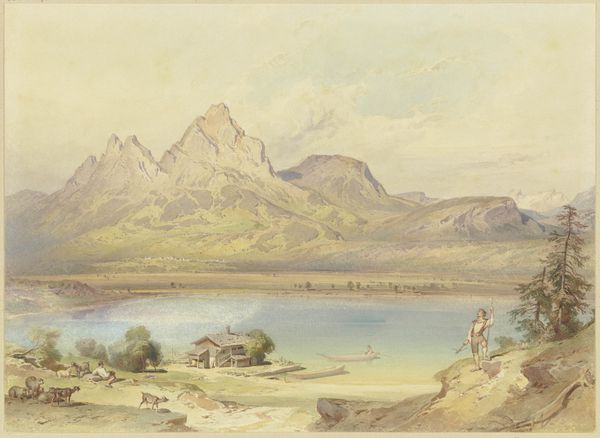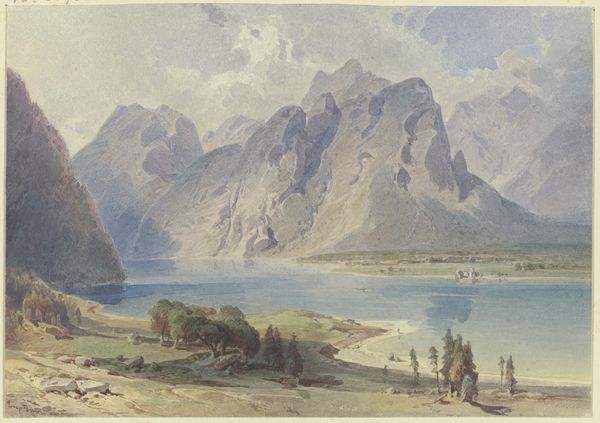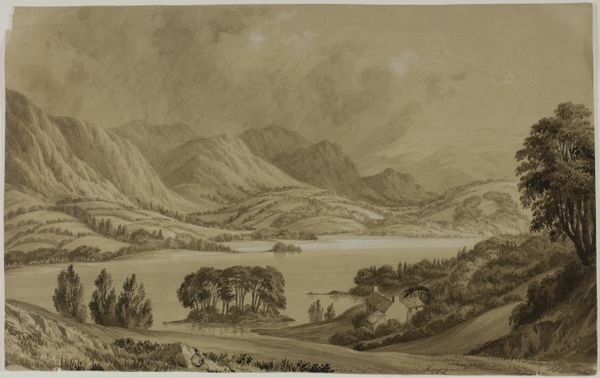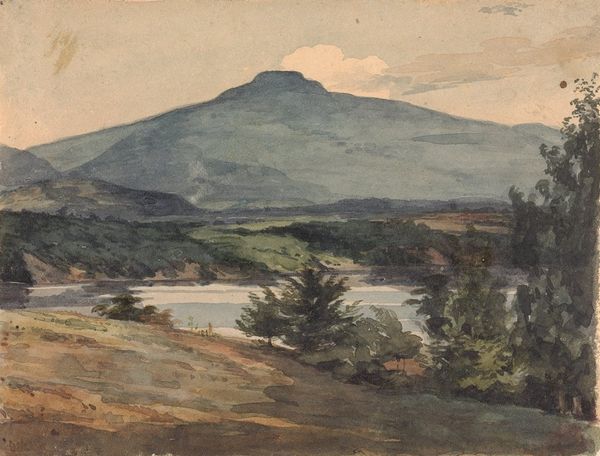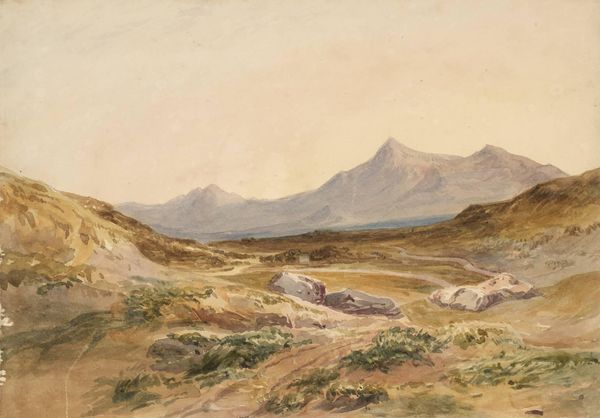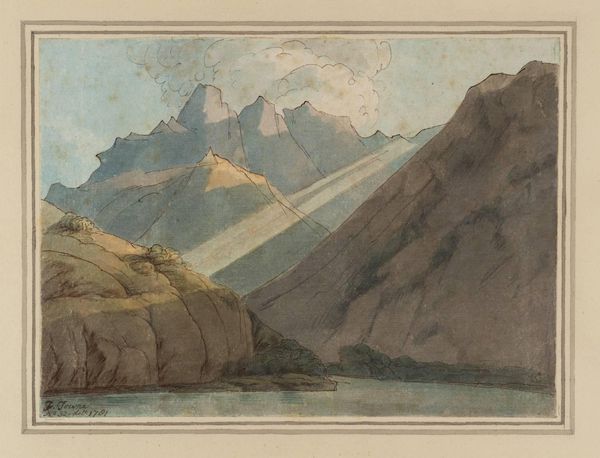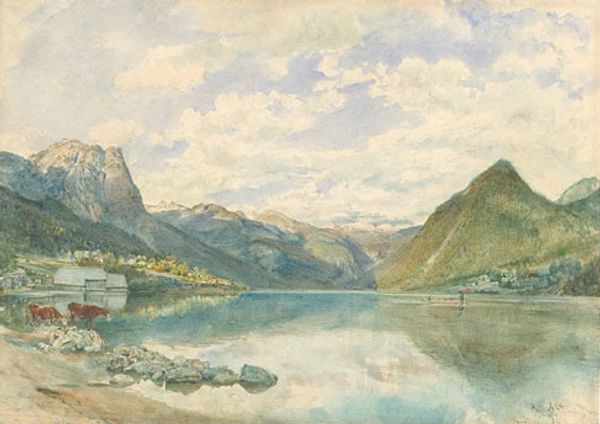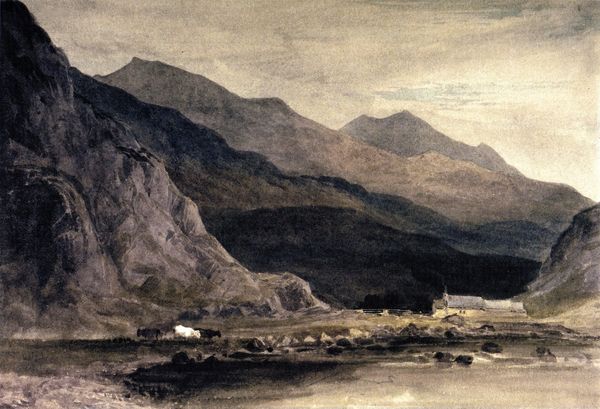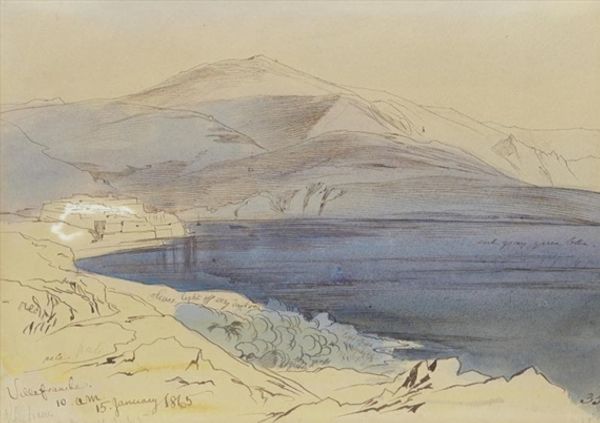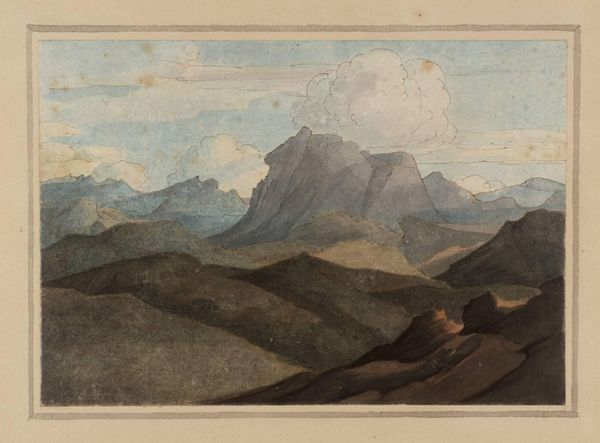
drawing, plein-air, paper, watercolor
#
drawing
#
plein-air
#
landscape
#
paper
#
watercolor
#
romanticism
#
watercolour illustration
#
watercolor
Copyright: Public Domain: Artvee
Curator: Gazing at Thomas Sully's watercolor drawing, "Mountainous Landscape with Lake and Figure in Foreground", I'm struck by its overt references to Romanticism. Editor: It's...peaceful, isn't it? In a lonely sort of way. Like being the only person awake during a dream. Curator: Precisely. We must consider Romanticism’s emphasis on the individual experience, particularly the sublime. Sully positions a solitary figure within the landscape. Note that this figure’s experience is often set against the backdrop of political upheaval. How does individual identity negotiate this overpowering, yet beautiful landscape? Editor: Okay, 'overpowering' I get, definitely the mountains. And ‘negotiate' is interesting, too. Almost like the tiny figure is trying to make peace with something enormous. Does the landscape become a stand-in for... everything? Curator: Exactly. It mirrors the human condition itself. The landscape isn't simply a backdrop; it's an active force that shapes and is shaped by those within it. There’s that figure, but also, notice the almost miniature rendering of that cabin in the far background. Who lives there? How does it feel? These are some questions that open the image to a more theoretical, historically-minded understanding of what landscape might mean for both individual and societal identity formation. Editor: So, it's like…a conversation then. Not a loud one, maybe, but…like a murmur between what we think we know, and what’s really out there. The drawing isn't so much showing as...whispering? About being small, and being a part of something enormous, something lasting... Curator: Yes, there is dialogue. We need also to recall Sully’s other portraits—they are often images of historical and political figures, embedded within larger questions around revolution and emancipation. He moves from portrait to plein-air landscapes, like this one, opening our theoretical understanding to these Romantic era political questions, Editor: Right, there are larger historical stakes at play, the picture isn't just about pretty colors, then. Even looking at it with this in mind, its impact on me remains, maybe intensified by its historic dimension, an experience of awe, a meditation...I get the sense of being almost weightless in the presence of all that immensity. Thanks, Thomas, for letting me sit with that a bit! Curator: Thank you, I have never experienced this painting so directly. The intersectional understanding of the historical-political, along with such deeply-felt response, enriches our understanding of its significance.
Comments
No comments
Be the first to comment and join the conversation on the ultimate creative platform.

